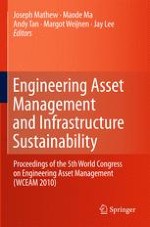2012 | OriginalPaper | Chapter
Council Building Management Practices, Case Studies and Road Ahead
Authors : R. Edirisinghe, S. Setunge, G. Zhang, R. Wakefield
Published in: Engineering Asset Management and Infrastructure Sustainability
Publisher: Springer London
Activate our intelligent search to find suitable subject content or patents.
Select sections of text to find matching patents with Artificial Intelligence. powered by
Select sections of text to find additional relevant content using AI-assisted search. powered by
